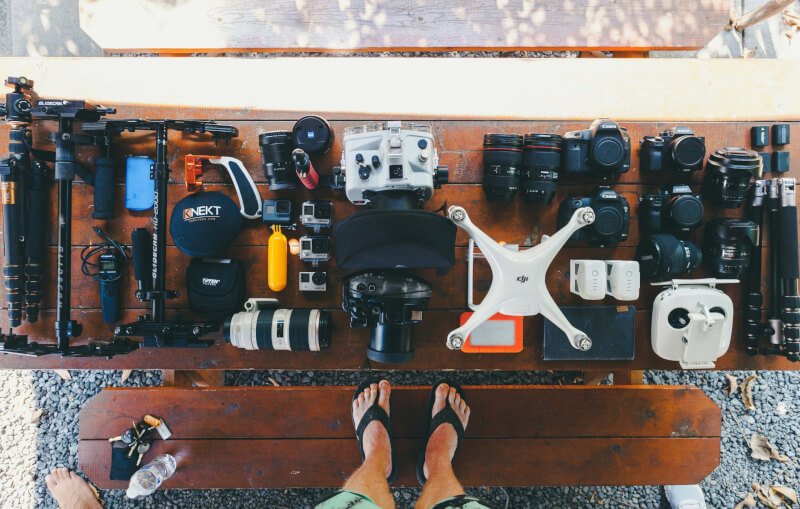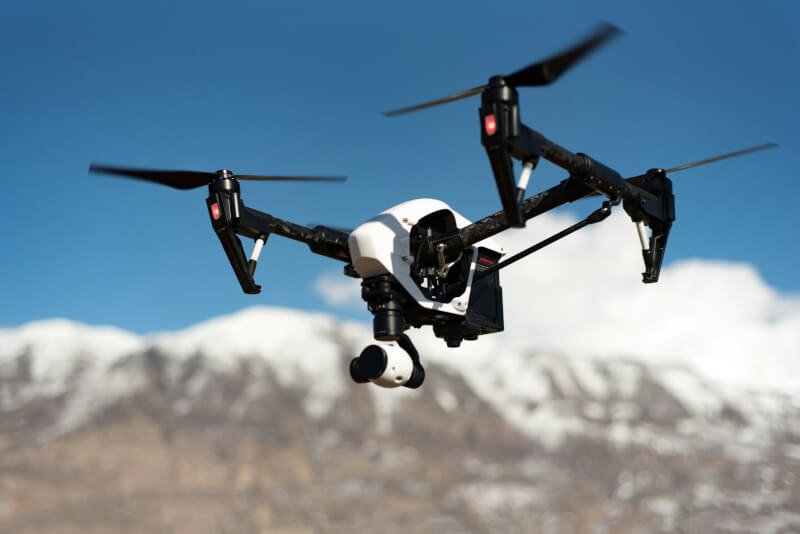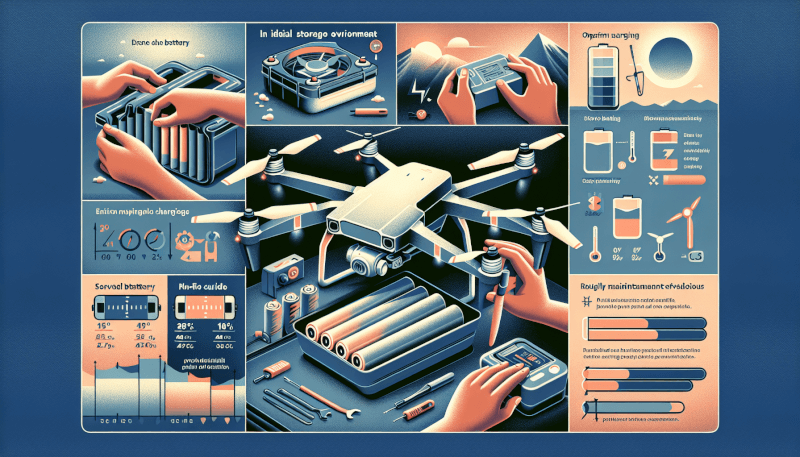If you’re an avid drone enthusiast, you know that the lifespan of your drone’s batteries plays a crucial role in your flying experience. After all, nothing is more frustrating than being in mid-air and suddenly losing power. To ensure you get the most out of your drone’s batteries, there are a few simple yet effective strategies you can employ. From proper storage and charging techniques to regular maintenance and utilization of advanced battery technology, this article will guide you through the best ways to maximize the lifespan of your drone’s batteries, allowing you to soar through the skies with uninterrupted joy and excitement. So, let’s dive into the world of drone battery care and make sure your flying adventures are always fully charged!

Understanding the Drone Battery
Drones have become increasingly popular for various purposes such as aerial photography, videography, and recreational flying. However, one crucial aspect of owning a drone is understanding and maximizing the lifespan of its batteries. A drone battery is not just a power source for your equipment; it plays a vital role in the overall performance and longevity of your drone. Therefore, it is essential to have a comprehensive understanding of different types of drone batteries and how they work.
Different Types of Drone Batteries
There are mainly two types of drone batteries: Lithium Polymer (LiPo) battery and Lithium-ion (Li-ion) battery. LiPo batteries are the most common type used in drones due to their high energy density, lightweight, and ability to discharge quickly. On the other hand, Li-ion batteries offer longer flight times and higher capacities, making them suitable for professional drones. Understanding the differences between these battery types will help you make an informed decision when purchasing or replacing your drone batteries.
How Drone Batteries Work
Drone batteries are rechargeable energy storage devices that convert stored chemical energy into electrical energy to power the drone’s motor. The battery consists of one or more cells, each containing a positive electrode (cathode), a negative electrode (anode), and an electrolyte. When the battery is connected to the drone, a chemical reaction occurs within the cells, generating an electrical current that powers the drone’s motor.
The capacity of a drone battery is measured in milliampere-hours (mAh) and determines how long it can provide power to the drone. It is important to note that battery performance can decrease over time due to factors such as aging, improper usage, and environmental conditions. Optimizing battery charging, storage, and maintenance is crucial to prolonging the lifespan and maintaining the performance of your drone batteries.
Optimizing Battery Charging
Proper battery charging techniques can significantly impact the lifespan and performance of your drone batteries. Here are some tips to optimize the charging process:
Using a High-Quality Charger
Investing in a high-quality charger specifically designed for your drone battery is essential. These chargers provide balanced charging, ensuring that each cell within the battery is charged evenly. This helps prevent overcharging or undercharging, which can both negatively impact battery lifespan. Avoid using generic or low-quality chargers, as they may not provide accurate charging levels and can potentially damage your batteries.
Charging in the Proper Environment
When charging your drone batteries, it is crucial to ensure that you are doing so in a suitable environment. Avoid charging in extreme temperatures, as this can lead to overheating and reduce battery performance. Charging in a cool and well-ventilated area is recommended to maintain optimal battery health. Additionally, make sure to place the charger on a non-flammable surface and away from any potential hazards.
Avoiding Overcharging and Over Discharging
Overcharging or over-discharging your drone batteries can significantly impact their lifespan. Overcharging can cause excess heat generation and result in a reduced battery capacity over time. On the other hand, over-discharging can lead to irreversible cell damage and decreased battery performance. It is crucial to monitor your battery’s charge level and avoid draining it completely or charging it beyond its recommended capacity.
Allowing Battery to Cool Down Before Charging
After each flight, it is advisable to let the battery cool down before charging it. This is because flight operations can cause the battery to heat up, and charging a hot battery can lead to internal damage. Allowing the battery to cool naturally to room temperature before charging ensures that it maintains a safe operating temperature and extends its overall lifespan.

Storage and Maintenance Tips
Proper storage and maintenance practices are essential to maximize the lifespan and performance of your drone batteries. Here are some tips to keep in mind:
Storing Batteries in a Cool and Dry Place
When not in use, it is important to store your drone batteries in a cool and dry place. Avoid exposing them to extreme temperatures, high humidity, or direct sunlight. Storing batteries in a controlled environment helps prevent degradation and preserves their capacity for longer periods. Additionally, consider using a fireproof storage bag or container to enhance safety precautions.
Avoiding Extreme Temperatures
Extreme temperatures, both hot and cold, can have a detrimental effect on battery performance and lifespan. High temperatures can cause accelerated battery degradation, while freezing temperatures can damage the chemical makeup of the cells. Avoid leaving your batteries in a car on a hot day or subjecting them to freezing temperatures. Instead, store them in temperature-controlled environments to maintain their health and longevity.
Maintaining Proper Battery Health
Regularly inspect your drone batteries for any signs of damage, such as swelling, leakage, or punctures. If you notice any issues, it is essential to replace the battery immediately to prevent any potential safety hazards or further damage. Additionally, avoid mishandling or dropping the battery, as this can also lead to internal damage and compromise its performance. Proper care and handling will contribute to the overall lifespan of your batteries.
Regular Battery Inspections and Cleaning
Perform regular inspections of your drone batteries to check for any dirt, debris, or corrosion on the battery connections or terminals. Clean the terminals using a soft cloth or brush to ensure good contact between the battery and the drone. Maintaining clean and corrosion-free connections will help optimize battery performance and prevent any voltage drops or power interruptions during flight.
Flying Techniques for Battery Longevity
In addition to proper charging, storage, and maintenance, certain flying techniques can contribute to prolonging the lifespan of your drone batteries. Here are some tips to consider:
Avoiding Aggressive Flying
Aggressive flying maneuvers such as rapid acceleration, high-speed descents, or sudden direction changes can put a significant strain on your drone’s battery. These movements can cause a sudden surge in power demand, leading to increased heat generation and potential voltage drops. Opting for smoother and more controlled flying techniques will reduce the strain on your batteries and increase their longevity.
Minimizing Weight on the Drone
Every gram of additional weight on your drone requires more power from the battery to stay airborne. Minimizing unnecessary weight, such as excess accessories or non-essential equipment, can significantly extend your battery’s flight time and overall lifespan. Consider removing any non-essential items before every flight to maximize battery efficiency.
Optimizing Flight Modes
Most drones offer different flight modes, such as sport mode, normal mode, or GPS mode. Each mode has varying power requirements, with sport mode demanding the most power. When looking to maximize your battery’s lifespan, consider flying in modes that allow for more efficient and balanced power consumption. GPS mode, for example, maintains a more stable flight and generally consumes less power compared to sport mode.
Flying in Ideal Weather Conditions
Weather conditions play a crucial role in both flight performance and battery lifespan. Extreme temperatures, high winds, or heavy precipitation can put a significant strain on your drone’s batteries and reduce their overall performance. Whenever possible, fly in moderate weather conditions with calm winds and optimal temperatures. This will not only maximize flight performance but also help prolong battery life.
Flight Planning and Efficiency
Proper flight planning and efficient flight paths can contribute to maximizing your battery’s lifespan. Plan your flights to minimize unnecessary maneuvers and keep the flight path as smooth and efficient as possible. Avoid flying against strong headwinds, as this requires your drone to work harder and drain the battery faster. Additionally, consider using altitude and wind patterns to your advantage to minimize power consumption during flight.

Battery Performance Monitoring
Monitoring the performance of your drone batteries is essential to ensure optimum power delivery and to detect any potential issues. Here are some tips for effective battery performance monitoring:
Using Battery Monitoring Apps or Software
Many drones come with companion apps or software that provide real-time battery information and monitoring features. These apps can display important data such as battery voltage, remaining charge, and estimated flight time. Utilizing these apps allows you to keep track of your battery’s performance during flight and make informed decisions based on the data provided.
Checking Battery Voltage and Capacity
Regularly checking your battery’s voltage and capacity is crucial to understanding its health and performance. A gradual decrease in voltage or capacity over time may indicate that the battery is reaching the end of its lifespan. It is important to note that each battery has a limited number of charge cycles before its performance starts to decline significantly. Keeping track of voltage and capacity will help you gauge when it’s time to replace your battery.
Recording and Analyzing Flight Data
Some advanced drones offer the ability to record flight data, including battery performance metrics. Analyzing flight data can provide valuable insights into how your battery performs under different conditions and flight scenarios. By reviewing this data, you can identify any patterns or issues that may impact battery lifespan and adjust your flying techniques accordingly.
Tips for Prolonging Battery Lifespan
In addition to the techniques mentioned above, here are some additional tips to maximize the lifespan of your drone batteries:
Have Spare Batteries
Investing in spare batteries is always a good idea, especially if you plan on flying for extended periods. Having extra batteries allows you to rotate their usage, reducing the strain on individual batteries and prolonging their overall lifespan. It also provides you with the flexibility to continue flying while one battery is charging, maximizing the time you spend in the air.
Rotate Battery Usage
To prevent one battery from carrying the entire load, it is advisable to rotate the usage of your batteries. By distributing flight time evenly among your batteries, you ensure that each one experiences a similar amount of usage and wear. This helps prevent any specific battery from being constantly subjected to the highest power demands and prolongs their collective lifespan.
Keep Battery Connections Clean
Clean and properly connected battery terminals are essential for reliable power delivery. Regularly inspect the battery connections and clean them using a soft, dry cloth or brush. This removes any dirt, debris, or corrosion that may hinder proper contact and compromise battery performance. Clean connections minimize voltage drops and improve overall battery efficiency.
Avoid Full Discharge
While LiPo batteries can handle deep discharges, it is generally advisable to avoid fully discharging your drone batteries whenever possible. Fully discharging a battery increases stress levels on its cells and can lead to irreversible damage. Instead, aim to land your drone when the battery reaches around 20-30% capacity to ensure a longer lifespan.
Recharge Partially-Drained Batteries
If you have partially-drained batteries, it is important to recharge them as soon as possible. Leaving partially-drained batteries without charging can lead to self-discharge and cell imbalance, which can reduce their overall capacity. As a good practice, always recharge your batteries promptly after each flight to maintain their health and maximize their lifespan.

Conclusion
Understanding the drone battery and implementing the best practices for its charging, maintenance, and flight usage are essential for maximizing its lifespan. By using a high-quality charger, charging in a suitable environment, and avoiding overcharging or over discharging, you can significantly prolong the life of your drone batteries. Proper storage, regular inspections, and clean connections ensure optimal battery health and performance. Additionally, flying techniques that minimize aggression, weight, and power consumption, coupled with effective battery performance monitoring, contribute to extended battery lifespan. By following these tips in combination with proper flight planning and maintaining multiple batteries, you can make the most of your drone’s battery life and enjoy longer, more productive flights.


